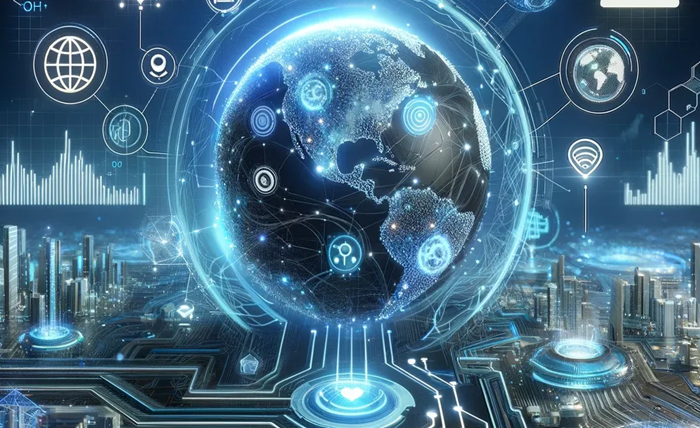Businesses continuously seek innovative tools and strategies to maintain a competitive edge. Among the most transformative advancements in recent years are Digital Twins and Artificial Intelligence (AI), two technologies that are redefining how industries operate and innovate. A Digital Twin creates a virtual replica of a physical object or process, providing a dynamic model to simulate, analyze, and predict performance.
On the other hand, AI enables machines to learn, adapt, and make decisions with unprecedented speed and accuracy. When these two technologies converge, they unlock unparalleled opportunities for optimization, cost reduction, and innovation. The synergy between Digital Twin Technology and AI is driving efficiency and transforming traditional paradigms. This article delves into how this powerful combination is shaping the future of industries worldwide.
Understanding the Role of Digital Twin Technology
Physical systems, procedures, or assets can be virtually replicated using digital twin technology. These digital counterparts allow businesses to monitor, simulate, and analyze real-world scenarios in a risk-free environment. By collecting and integrating real-time data, it enables organizations to understand how their systems perform under varying conditions.
This technology provides a powerful framework for experimentation. Companies can test different strategies and adjustments on the virtual model before applying them in the real world. The ability to predict outcomes, identify inefficiencies, and optimize operations makes it invaluable for sectors like manufacturing, healthcare, and urban planning.
How Artificial Intelligence Enhances Decision-Making
Artificial Intelligence (AI) adds another layer of intelligence to this equation. AI systems can analyze vast amounts of data, recognize patterns, and provide actionable insights. This capability is especially useful when dealing with complex systems that generate massive streams of data.
By integrating AI, businesses can uncover trends that humans might overlook. For example, AI can detect subtle signs of equipment failure in manufacturing or optimize energy usage in buildings. Its predictive power allows for proactive decisions, saving time, reducing costs, and improving reliability across various applications.
The Synergy Between Digital Twin and AI
What happens when these two technologies come together? The combination of Virtual Twin Technology and AI creates a dynamic ecosystem where insights are generated in real time. The digital twin acts as a bridge between the physical and digital worlds, while AI interprets the data to suggest improvements.
For instance, in the automotive industry, this pairing allows companies to design safer, more efficient vehicles. Engineers can use a digital twin to simulate how a car performs under different conditions, while AI analyzes the results to recommend adjustments. This partnership doesn’t just solve problems—it creates opportunities for continuous improvement.
Applications Across Industries
The integration of digital twins and AI is transforming industries by driving efficiency, sustainability, and innovation. In energy and utilities, they optimize renewable energy, manage power grids, and predict maintenance for oil and gas infrastructure. Transportation benefits from fleet management, supply chain optimization, and autonomous vehicle training, while aerospace uses these tools for aircraft maintenance and mission simulations. Construction and infrastructure leverage them for smart buildings, urban planning, and disaster preparedness.
Agriculture benefits from precision farming, livestock monitoring, and efficient supply chains. Entertainment, media, and tourism utilize these technologies for virtual productions, gaming, audience engagement, and personalized travel experiences. In pharmaceuticals, they accelerate drug development and personalized medicine, while environmental management uses simulations for conservation, climate modeling, and resource sustainability.
Digital Twin Technology, when combined with the analytical power of AI, represents a paradigm shift in how industries approach challenges and opportunities. This dynamic duo offers unparalleled insights, enabling businesses to experiment, predict, and optimize with precision. Moving forward, the key to success lies in embracing this synergy and exploring its vast potential to create smarter, more efficient systems that drive progress and change the world.

